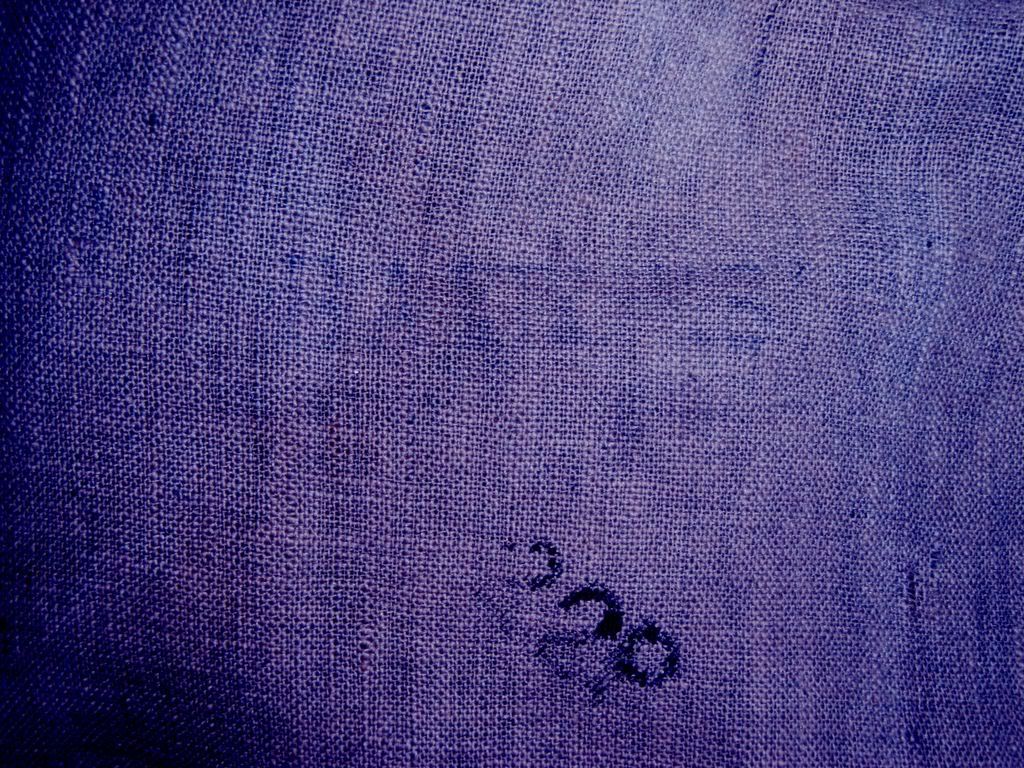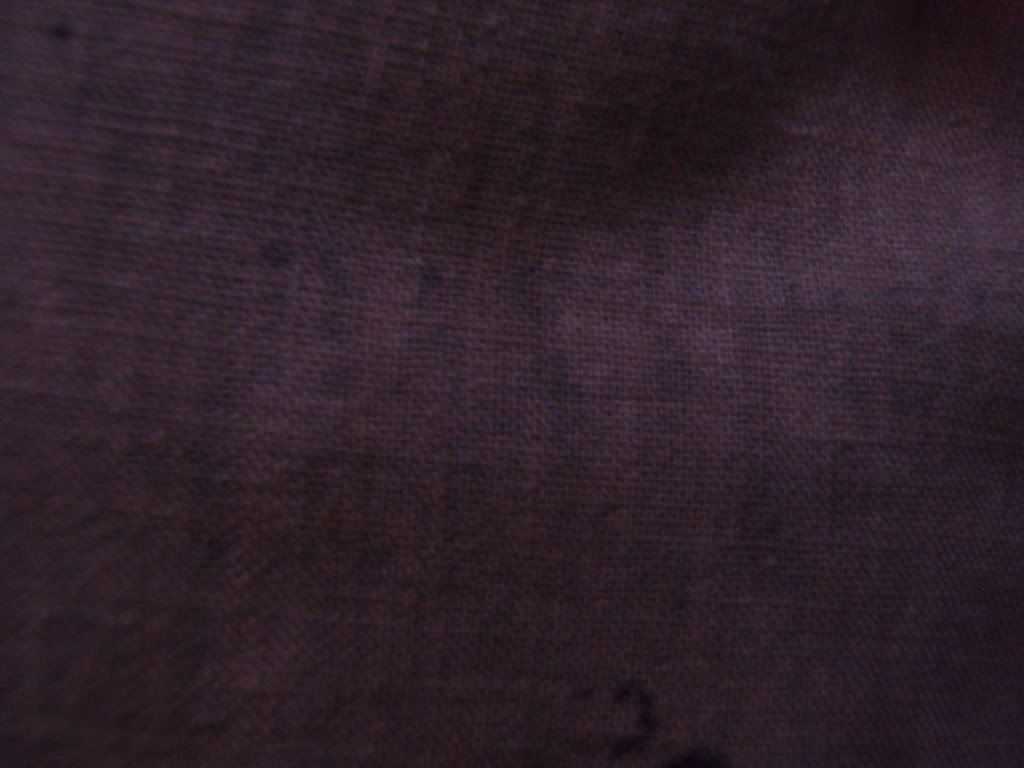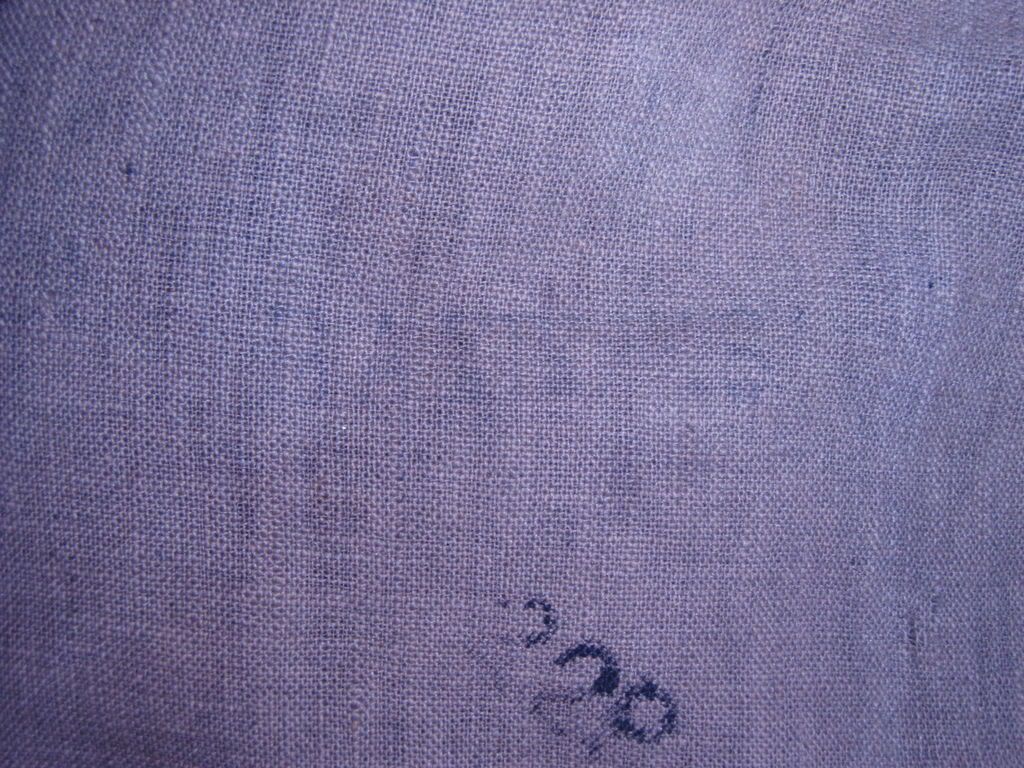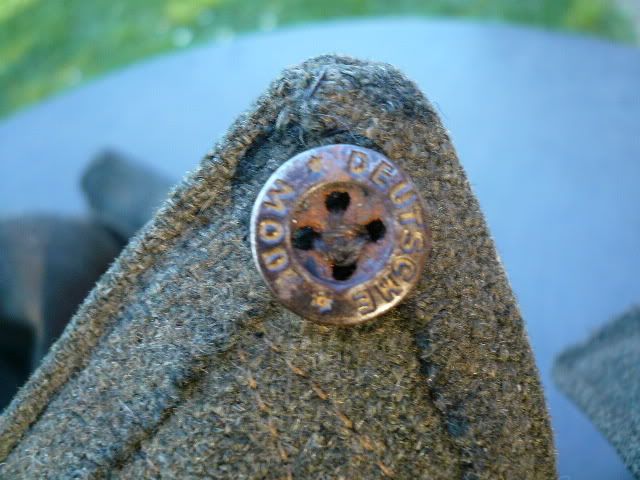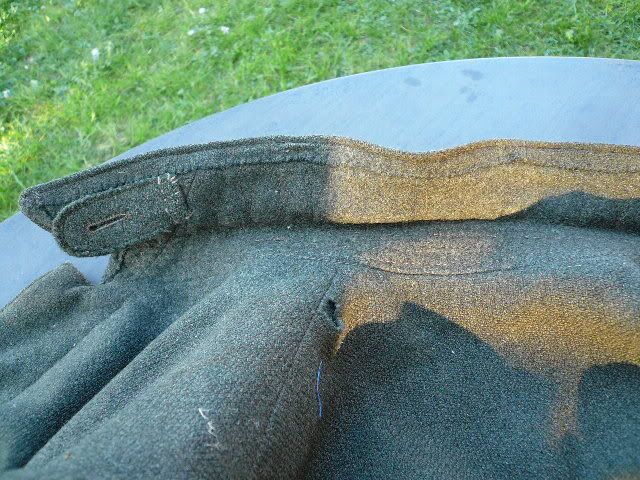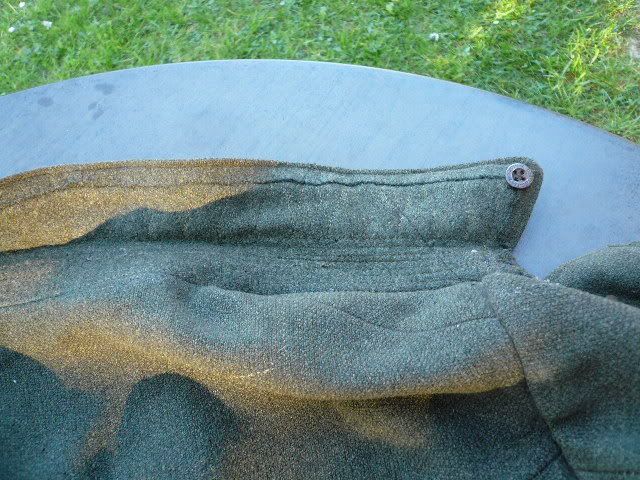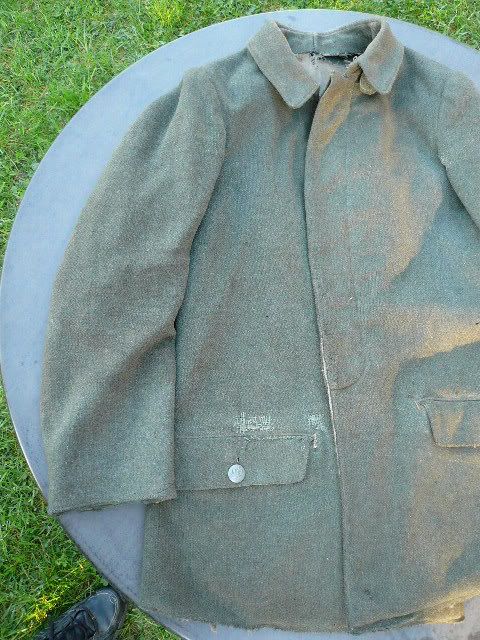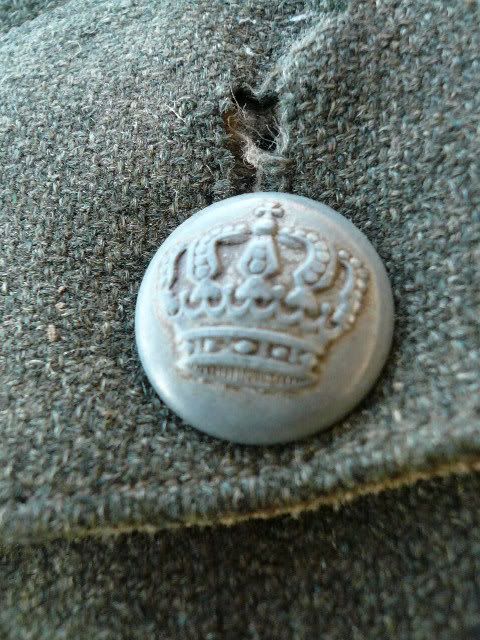Chaps,
Here is a recent acquisition. Looks like it went through the Somme, Verdun and Passchendaele - very 'trenchy' feel about it.
The wool is the coarsest tunic material I have seen, particularly in the worn areas, it has lost all the 'fluffiness' you expect in wool. Still a ribbed type pattern. Several 'darning repairs' to keep the tunic serviceable. I wonder if it is a late war piece utilising lower quality fabric.
I have checked it against my references and it looks absolute standard issue M15 Bluse in every detail, right down to the reinforcement stitching. No belthooks but you can see where they were removed and the holes sewn up - I am guessing a field modification to take uncomfortable metal items out of the tunic. The only markings I can see are the '228' and the '4'. The collar is basically the same as the tunic material, no facing.
What do you think?
Mike
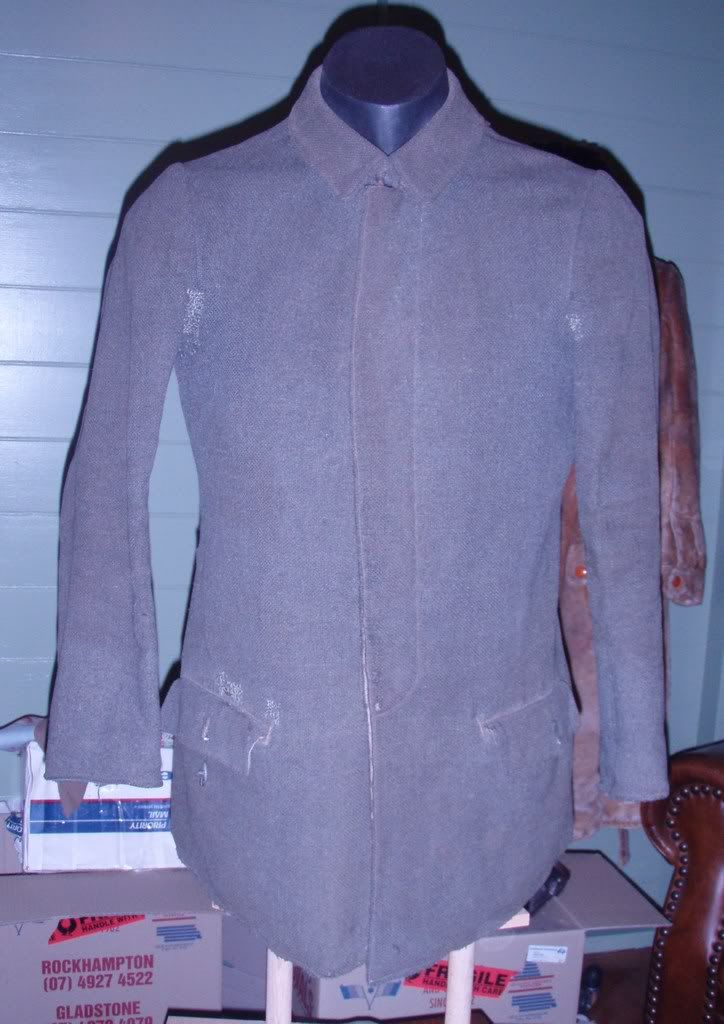
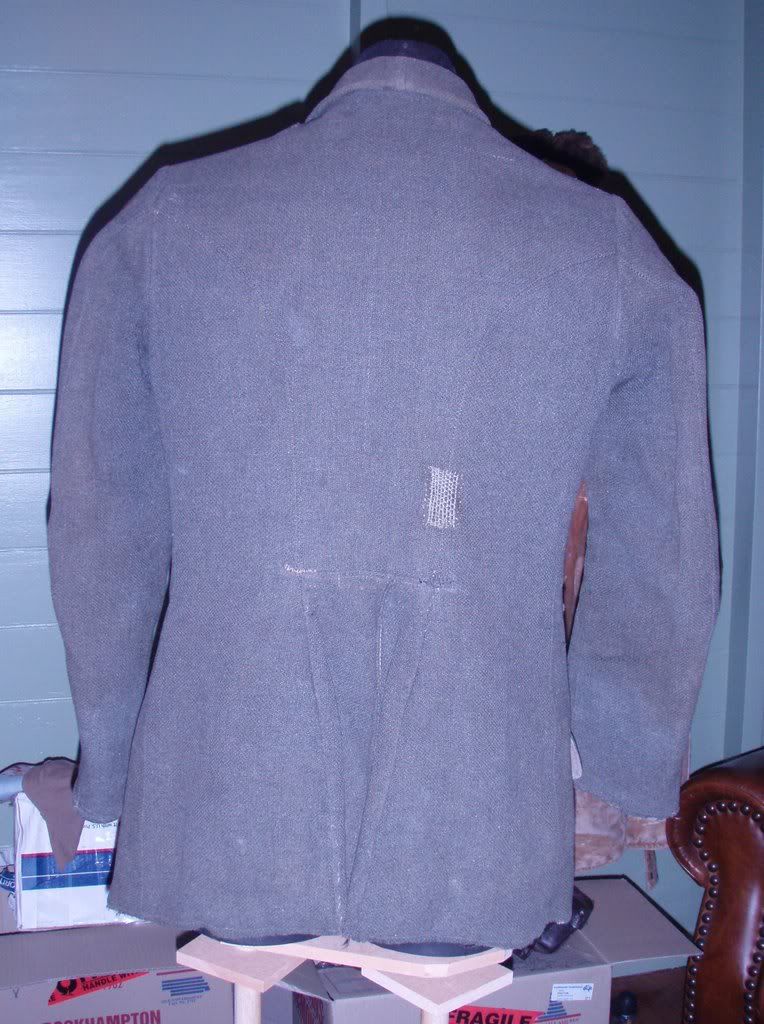
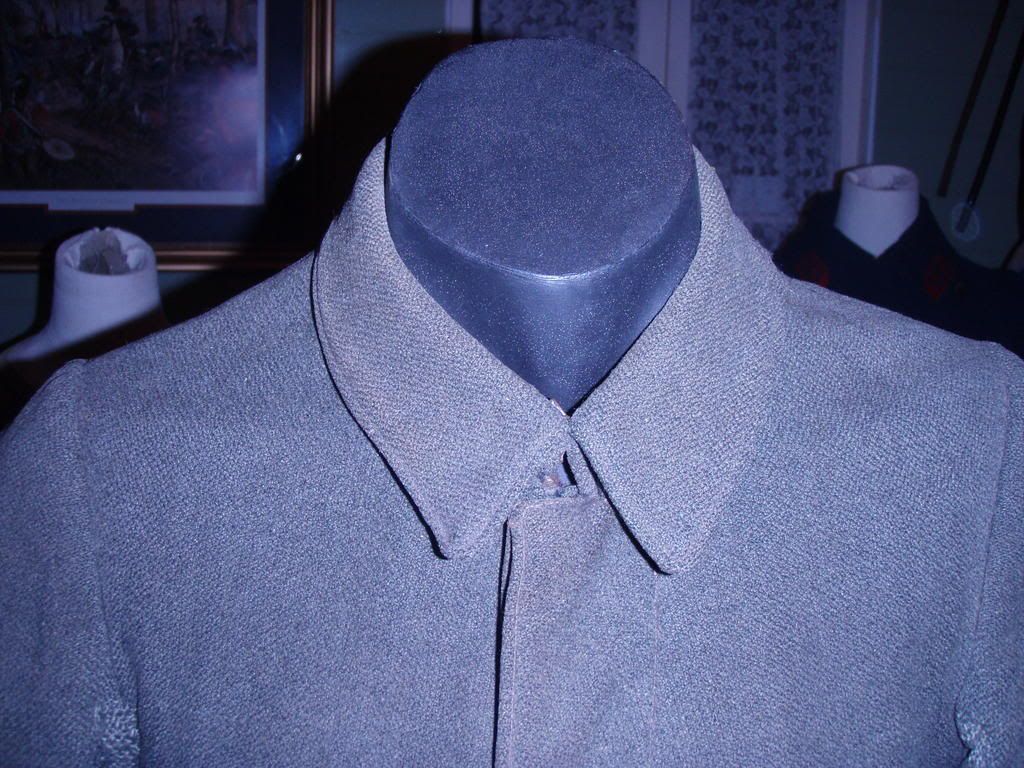
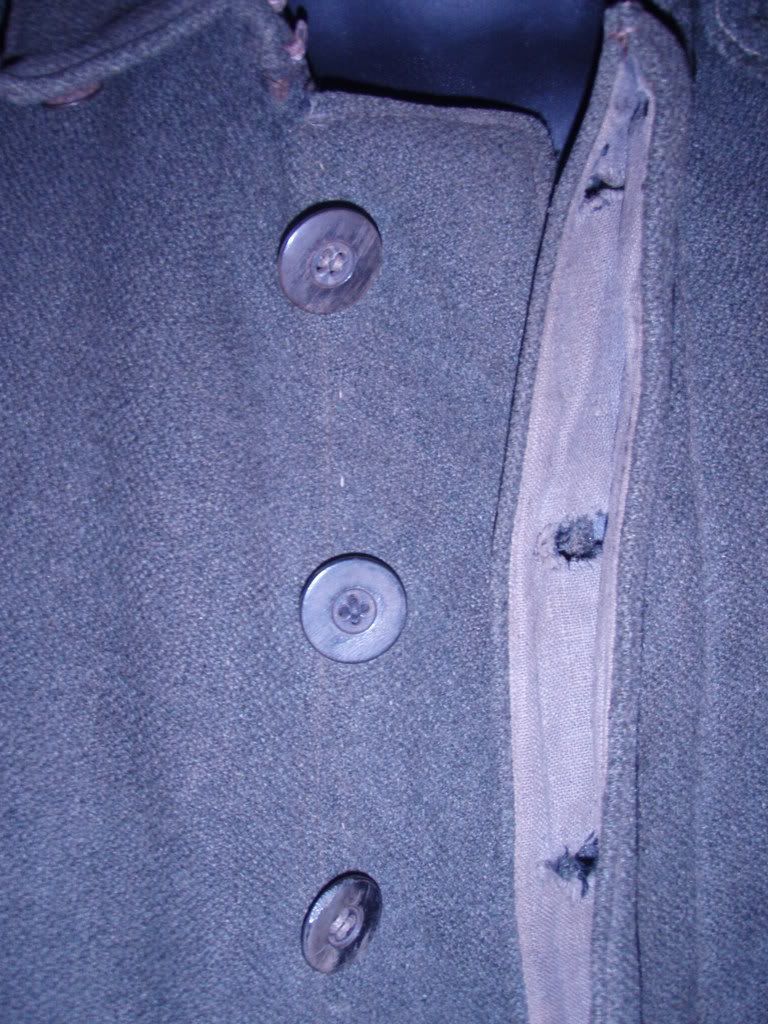
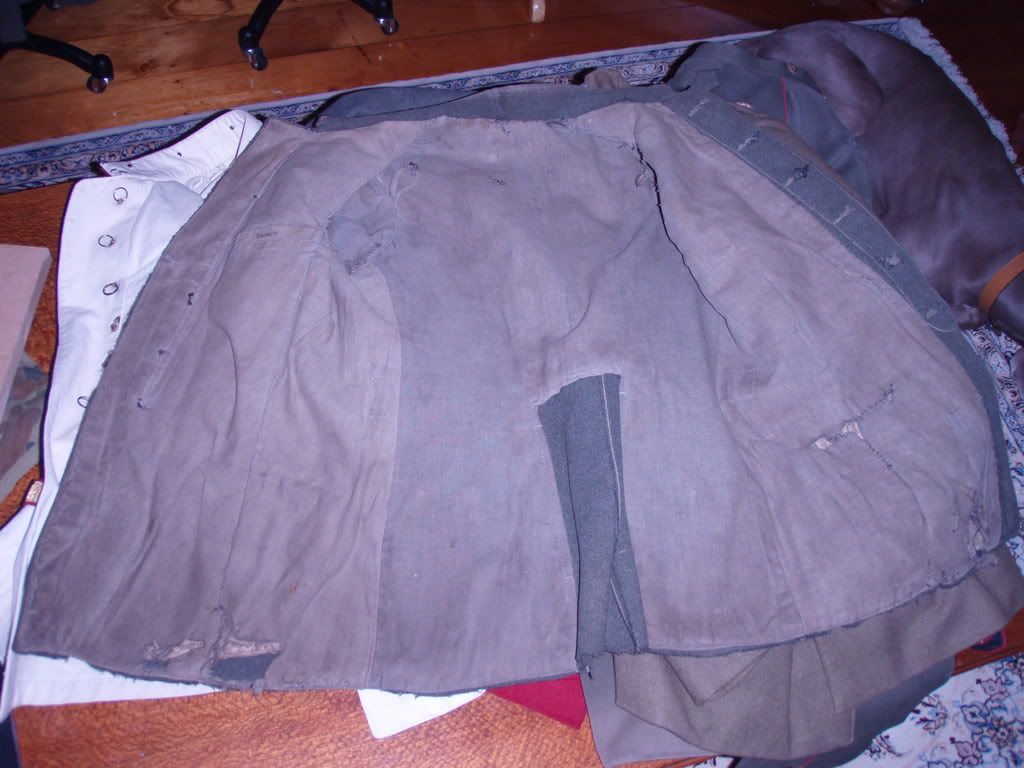
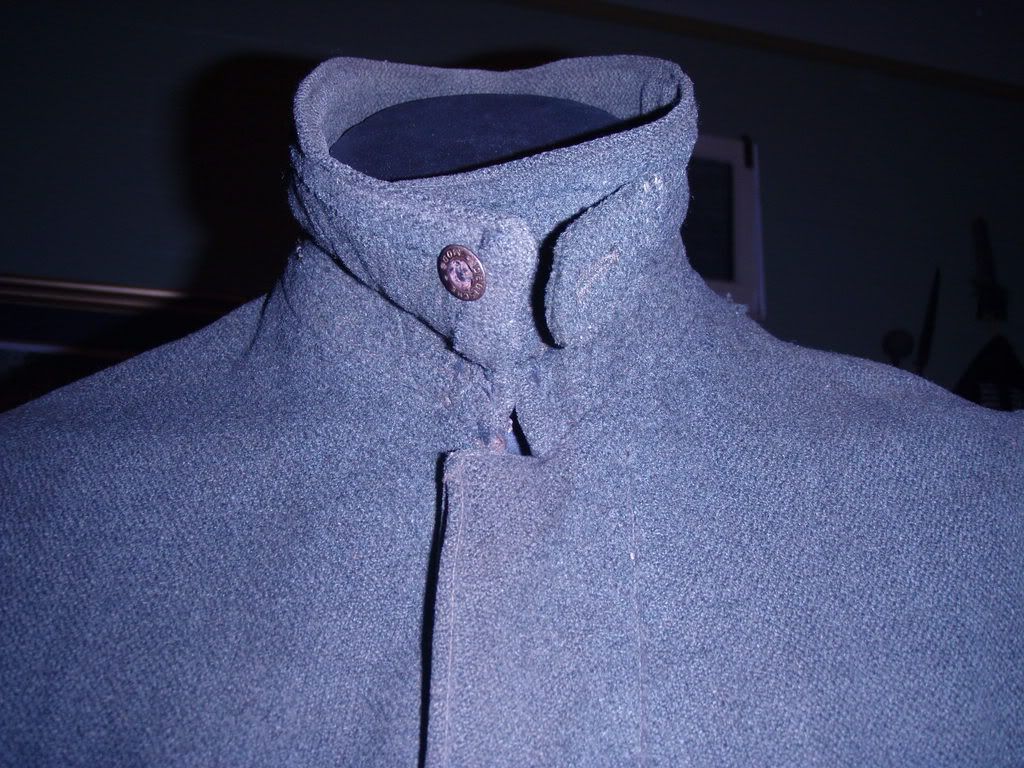
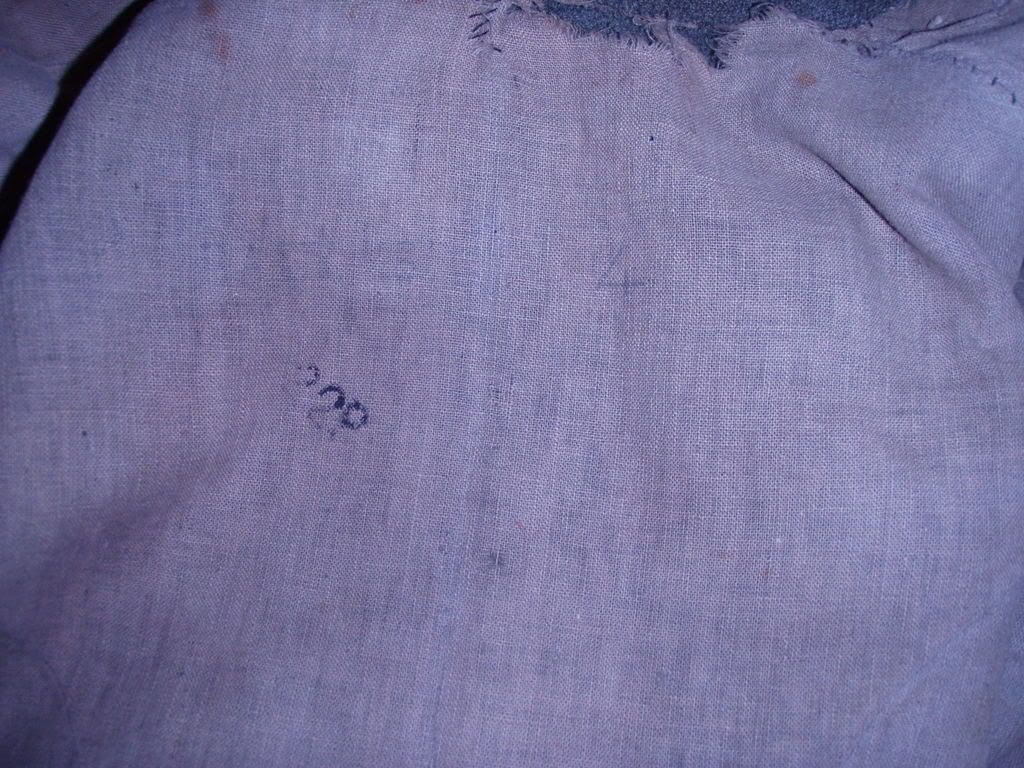
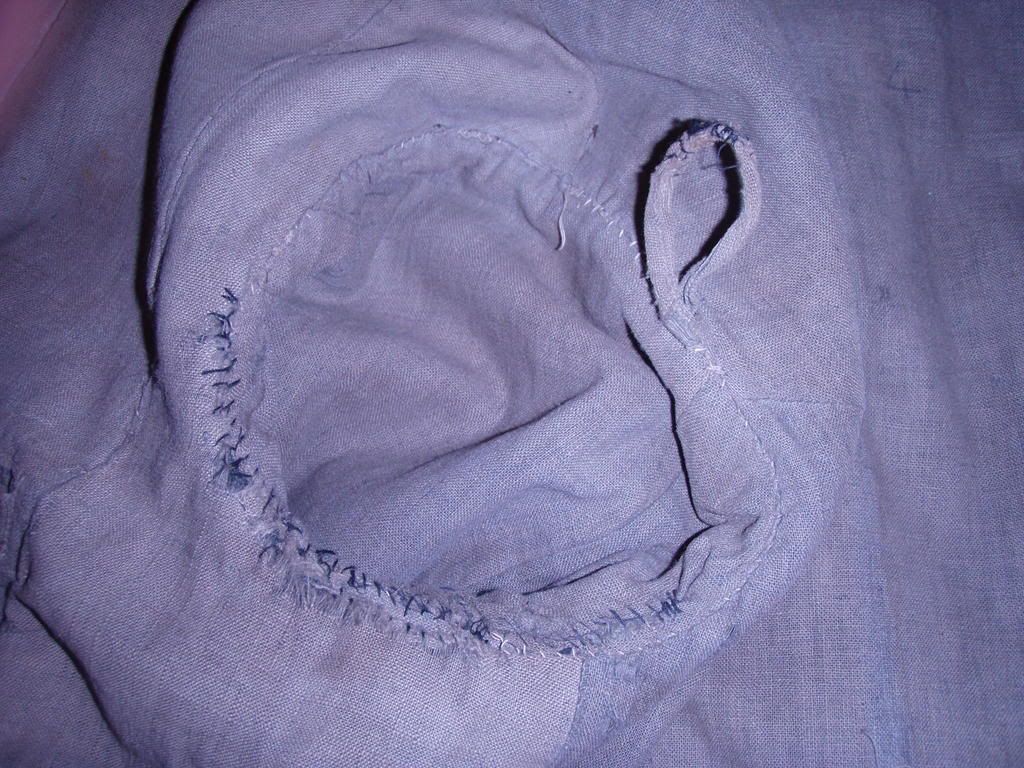
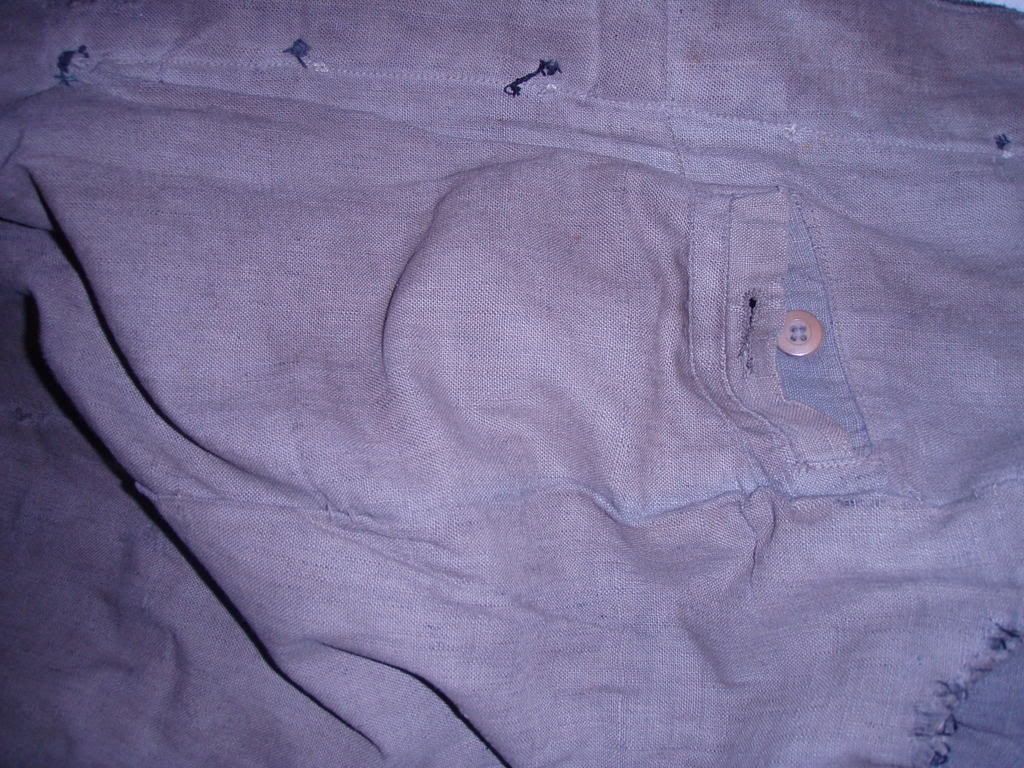
Here is a recent acquisition. Looks like it went through the Somme, Verdun and Passchendaele - very 'trenchy' feel about it.
The wool is the coarsest tunic material I have seen, particularly in the worn areas, it has lost all the 'fluffiness' you expect in wool. Still a ribbed type pattern. Several 'darning repairs' to keep the tunic serviceable. I wonder if it is a late war piece utilising lower quality fabric.
I have checked it against my references and it looks absolute standard issue M15 Bluse in every detail, right down to the reinforcement stitching. No belthooks but you can see where they were removed and the holes sewn up - I am guessing a field modification to take uncomfortable metal items out of the tunic. The only markings I can see are the '228' and the '4'. The collar is basically the same as the tunic material, no facing.
What do you think?
Mike










